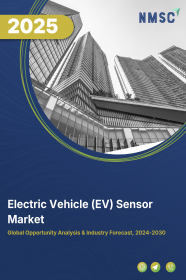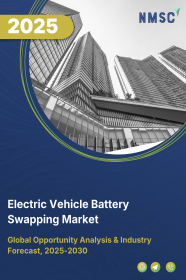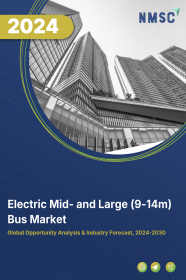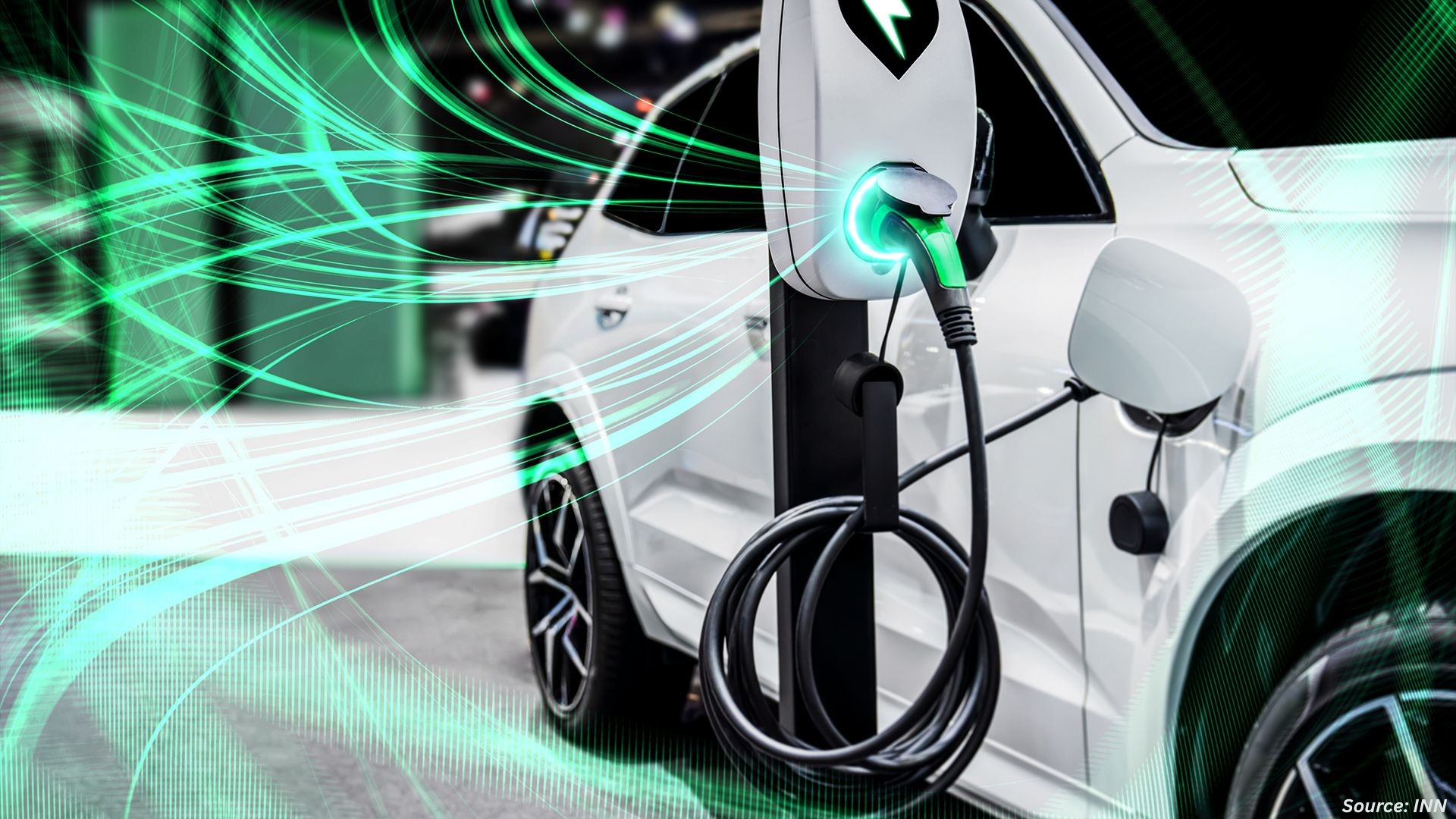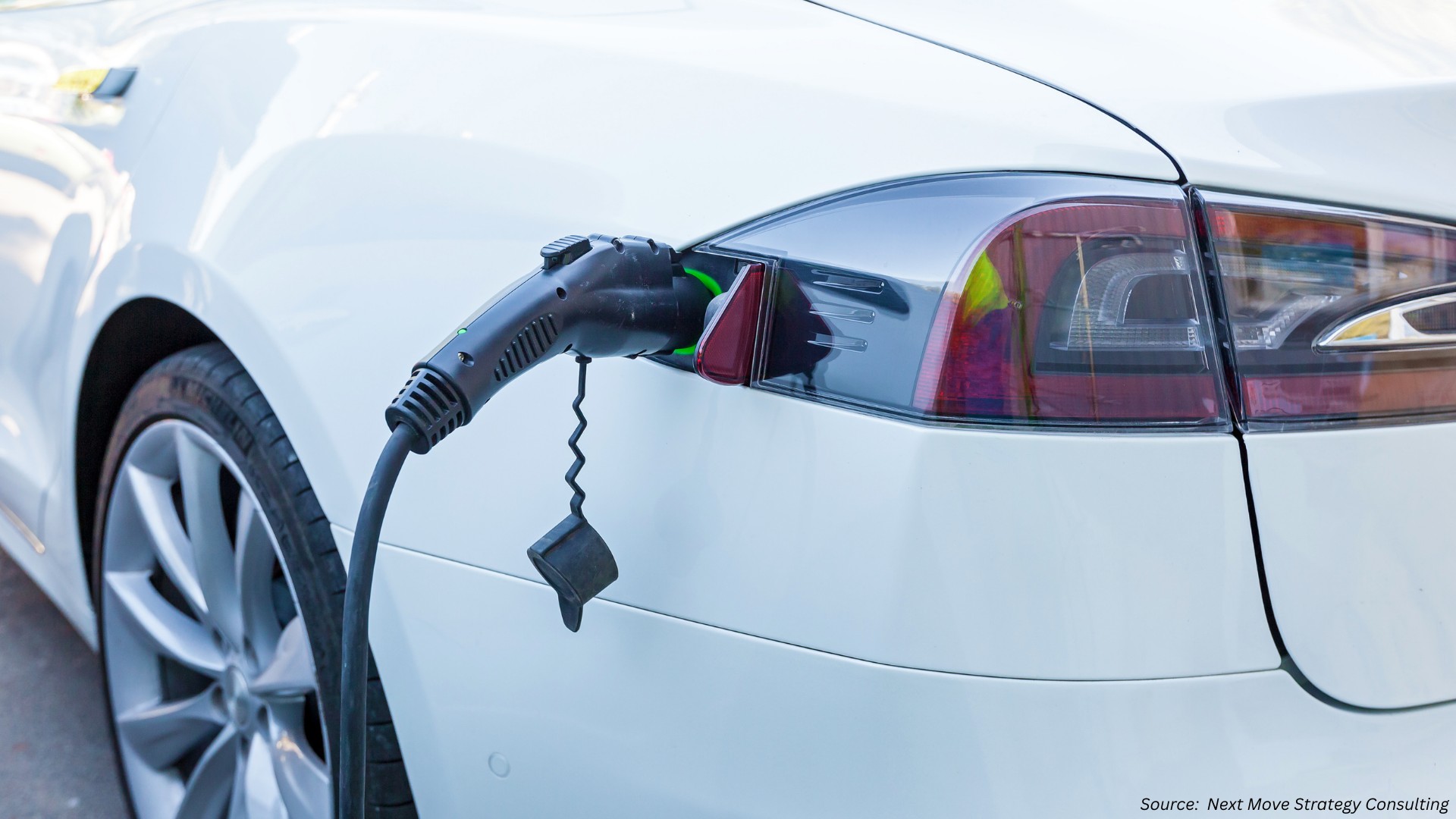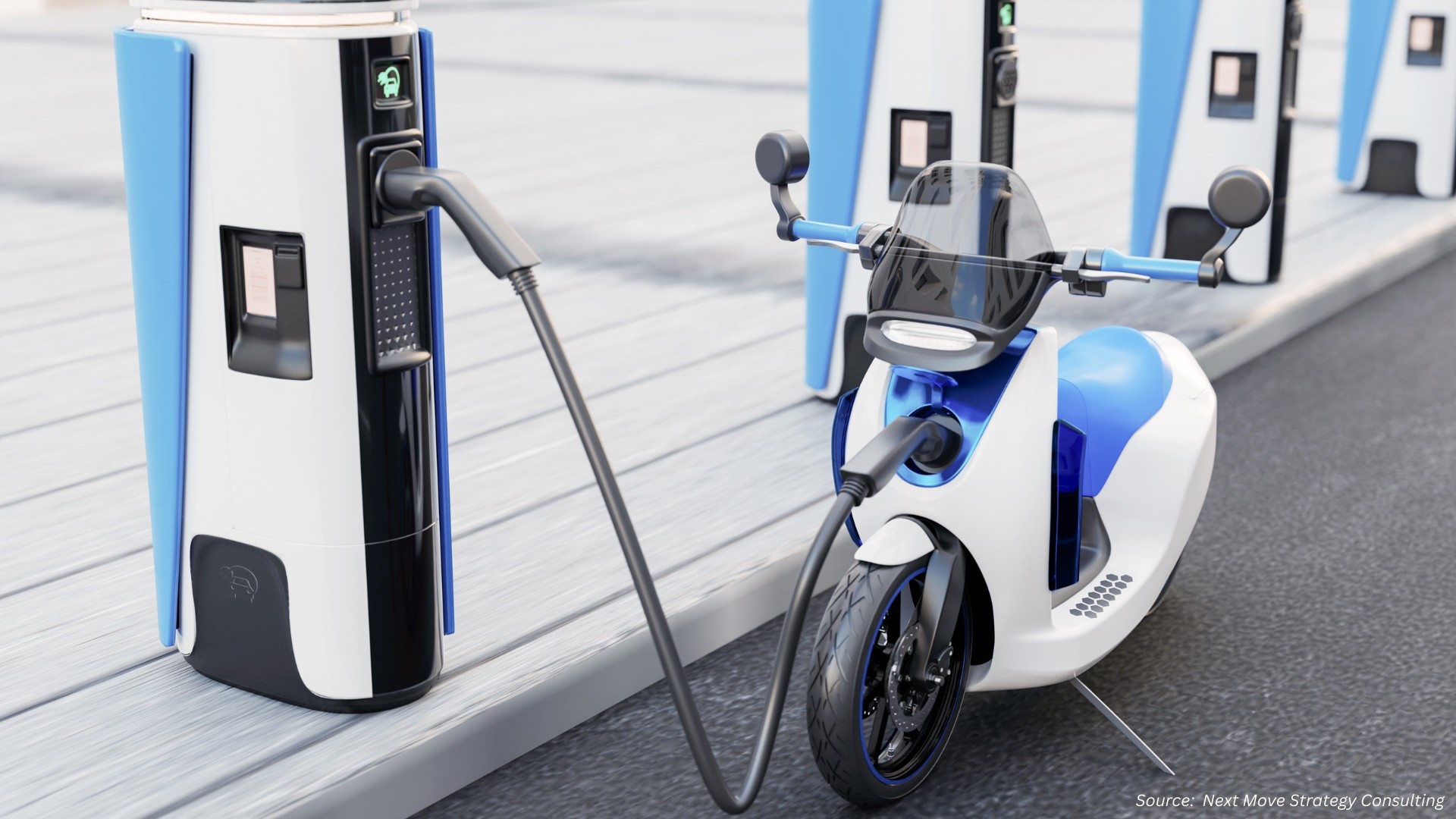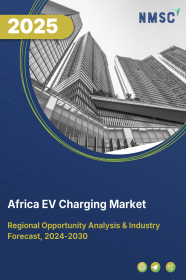
Africa Electric Vehicle (EV) Charging Market by Type of Charger (AC Chargers, and DC Chargers), by Charging Speed (Level 1, Level 2, and Level 3), by Connector Type (Type 1, Type 2, CCS, CHAdeMO and Others), by Installation (Fixed, and Portable), and by End User (Commercial, and Residential) – Opportunity Analysis and Industry Forecast 2023–2030.
Industry: Automotive & Transportation | Publish Date: 23-Oct-2025 | No of Pages: 211 | No. of Tables: 214 | No. of Figures: 159 | Format: PDF | Report Code : AT876
Market Definition
The Africa Electric Vehicle (EV) Charging Market was valued at USD 31.93 million in 2022, and is predicted to reach USD 256.53 million by 2030, with a CAGR of 30.3% from 2023 to 2030. Electric vehicle chargers are characterized by the rate at which they deliver energy to the vehicle's battery. They serve as a vital infrastructure connecting plug-in electric vehicles to electrical outlets for the purpose of recharging the vehicle's battery. These chargers facilitate the charging process by supplying the necessary electrical energy to the EV's battery.
Charging stations are compatible with electric vehicles, neighborhood electric vehicles (NEVs), and plug-in hybrids, allowing them to connect to an electrical source for charging. Some charging stations come equipped with advanced functionalities such as smart meters, cellular connectivity, and network access.
The charging of EVs can be carried out through several levels of charging such as level 1, level 2, and level 3. The higher the level of charging, the faster the charging process causing more power to be delivered to the vehicle. The use of electric vehicles significantly reduces the carbon footprints released into the atmosphere, which contain toxic gas. The growing threat of carbon emissions and other harmful gases stemming from transportation has triggered the vital necessity of adopting electric vehicles.
In addition, the penetration of EV charging is high in commercial spaces as compared to residential ones. Long-distance trips would benefit from ultra-fast charging capabilities made possible by public charging infrastructure. However, EV chargers for residential spaces offer significant growth potential as they are affordable and more convenient for charging electric vehicles as compared to commercial charging stations.
Growing Ev Sales and Infrastructure Developments Propel Electric Vehicle Charging in Africa
The growing adoption of electric vehicles (EVs) across Africa is accelerating the need for a well-established charging infrastructure. Countries like South Africa, Morocco, Kenya, and Egypt are witnessing a noticeable uptick in EV registrations, supported by rising fuel prices, climate-conscious consumers, and increasing model availability. As consumer demand shifts toward sustainable mobility, the need for publicly accessible, efficient, and geographically distributed charging stations has become more critical.
Both public authorities and private investors are responding by expanding EV charging networks, particularly in urban centers, commercial hubs, and along transport corridors. Governments are supporting this momentum through targeted incentives, pilot infrastructure programs, and national e-mobility roadmaps. The deployment of AC and DC chargers is growing steadily, with stakeholders increasingly exploring solar-powered and off-grid charging models suited to Africa’s unique energy landscape and infrastructure gaps.
Government Initiatives to Boost Ev Production Drive Electric Vehicle Charging Market in Africa
Government-led efforts across Africa are playing a pivotal role in shaping the future of EV adoption and charging infrastructure development. National policies focusing on clean energy transitions, reduced import duties for EV components, and localized EV production are stimulating both supply-side and demand-side growth. These policy frameworks not only promote domestic manufacturing but also ensure that charging infrastructure evolves in parallel with vehicle availability.
Several African governments have introduced strategic targets to scale EV production and usage within the next decade, creating fertile ground for charging infrastructure investment. Public-private partnerships, supported by international development organizations, are enabling infrastructure pilots and feasibility studies in multiple regions. By aligning electrification goals with transportation planning and energy resilience strategies, governments are setting the foundation for a robust and scalable EV charging ecosystem.
Fast Chargers High Initial Setup Costs Hinder the Ev Charging Market Growth
While demand for faster, more efficient charging solutions is rising, the high cost of deploying ultra-fast and Level 3 chargers presents a significant challenge in Africa. These chargers require substantial upfront capital, specialized installation, and stable grid connectivity—factors that remain inconsistent across much of the continent. As a result, charging network expansion has, in many regions, been limited to slower AC solutions, particularly where public funding is limited.
The gap between consumer expectations and infrastructure availability is widening, especially in commercial and intercity travel use cases. With traditional fueling taking only a few minutes, EV drivers are reluctant to wait extended periods for a full charge. This makes high-speed charging crucial to long-term EV market growth. Unless innovative financing models, government subsidies, or cost-reduction technologies are introduced, high initial investments in fast charging infrastructure could restrain the overall pace of adoption.
Surging Adoption of Vehicle-to-grid (v2g) Ev Charging Stations in Africa Unlocks Promising Opportunities
Africa is beginning to explore Vehicle-to-Grid (V2G) technology as a strategic opportunity to stabilize power supply, enhance grid resilience, and unlock new revenue streams for EV owners. V2G allows electric vehicles not just to consume power, but also to feed energy back into the grid—an especially valuable feature in regions with peak demand fluctuations and frequent outages. In areas where power reliability is inconsistent, V2G offers a dual-function energy solution.
Pilot projects and research initiatives are underway in parts of East and Southern Africa, assessing how V2G can be integrated with renewable energy sources like solar mini-grids. This opens the door for EVs to act as mobile energy storage units, particularly in off-grid or remote communities. However, scaling this technology requires significant investment in advanced infrastructure and smart grid readiness. Despite the challenges, V2G is poised to revolutionize how Africa approaches both energy and mobility—offering long-term benefits to governments, utilities, and consumers alike.
Competitive Landscape
The Africa Electric Vehicle (EV) charging industry includes several market players such as ABB Ltd, Siemens AG, Schneider Electric SE, Eaton Corporation plc, BYD Company Limited, EFACEC, Autel, Bolt.Earth, Delta Electronics, Enel X Way, Kempower, Zimi Charge,Alfen, BTC Power, Tritium, and others.
Africa Electric Vehicle (EV) Charging Market Key Segments
By Type of Charger
-
AC Chargers
-
Mode 1 (2.3 kW)
-
Mode 2 (2.3 kW)
-
Mode 3 (3.7 kW to 22 kW)
-
-
DC Chargers (22 kW to 350 kW)
By Charging Speed
-
Level 1
-
Level 2
-
Level 3
By Connector Type
-
Type 1
-
Type 2
-
CCS
-
CHAdeMO
-
Others
By Installation
-
Fixed
-
Portable
By End User
-
Commercial
-
Commercial Public EV Charging Stations
-
Highway Charging Stations
-
Fleet Charging Stations
-
Workplace Charging Stations
-
-
Commercial Private EV Charging Stations
-
-
Residential
-
Private Homes
-
Apartments
-
By Region
-
Africa
-
South Africa
-
Nigeria
-
Kenya
-
Egypt
-
Morocco
-
Ghana
-
Other Countries
-
Key Players
-
ABB Ltd.
-
Siemens AG
-
Schneider Electric SE
-
Eaton Corporation plc
-
BYD Company Limited
-
EFACEC
-
Autel
-
Bolt.Earth
-
Delta Electronics
-
Enel X Way
-
Kempower
-
Zimi Charge
-
Alfen
-
BTC Power
-
Tritium
Report Scope and Segmentation
|
Parameters |
Details |
|
Market Size in 2022 |
USD 31.93 Million |
|
Market Volume in 2022 |
4 Thousand Units |
|
Revenue Forecast in 2030 |
USD 256.53 Million |
|
Growth Rate |
CAGR of 30.3% from 2023 to 2030 |
|
Analysis Period |
2022–2030 |
|
Base Year Considered |
2022 |
|
Forecast Period |
2023–2030 |
|
Market Size Estimation |
Million (USD) |
|
Growth Factors |
|
|
Companies Profiled |
15 |
|
Market Share |
Available for 10 companies |
|
Customization Scope |
Free customization (equivalent up to 80 working hours of analysts) after purchase. Addition or alteration to country, regional, and segment scope. |
|
Pricing and Purchase Options |
Avail customized purchase options to meet your exact research needs. |

















 Speak to Our Analyst
Speak to Our Analyst



